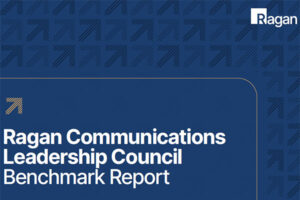How to help managers beat communications burnout
Employee comms leaders share tips for supporting overwhelmed managers.

As burnout rages on in this age of remote and displaced work, your managers are an essential resource.
But, those managers may be overwhelmed themselves. Senior leaders can work to equip managers with proper training resources, corporate talking points, metrics and more to ensure managers deliver the right message to their teams—and maintain an employee feedback loop.
Megan Witherspoon, VP of communications at Altria, and Rick Knudtson, CEO of Workshop, offered tips for promoting stronger manager communications during a panel at Ragan’s Employee Communications and Culture conference on Feb. 16. The panel was moderated by Ragan Consulting Group co-founder and senior partner Jim Ylisela.
Here are three of their top suggestions:
1. Provide managers with resources and training to reduce their stress.
Managers are the first line of defense when delivering messages to employees and need to be treated as such. But as expectations of managers to support initiatives like diversity and inclusion have evolved over the last couple of years, they may be asked to do more without feeling fully equipped or trained to do so. This can cause them to be overwhelmed.
“It’s no longer about managing a team and delivering business results,” said Witherspoon. “You also have to help them through some really serious societal challenges in a way we didn’t expect of leaders before. A new model of leadership is emerging that some traditional leaders are less equipped for.”
She suggested that senior communicators equip managers with quick facts, company perspectives on key issues and other practical information to reduce the likelihood that managers will freeze up when pushed to speak about sensitive topics. At Altria, these resources include quarterly calls with VPs to make sure managers are primed to speak to their teams after earnings calls, monthly “Leader’s Digests” of important external and internal news stories and more. Packaging these resources for managers ensures they have all the relevant information at the ready.
2. Mind the balance between custom comms and consistent messaging.
Knudtson emphasized that cascading a message down only works if it’s translated in a way employees can understand. “We try to use the same message in the same forms to all teams when we know that every individual in our organization chose to be there for a different reason,” he said. “They’re inspired by different things.”
“There’s a little bit of a balance to be struck between wanting to customize that message for your audience, knowing that different functions are going to hear things in different ways and also making sure there’s a consistency to the message,” added Witherspoon. “The minute there are discrepancies, suddenly there’s churn, rumor and speculation.”
3. Measure engagement to know what messages to prioritize.
Measuring your comms cadence against open rates and click rates can be an effective indicator of what messages to prioritize so employees aren’t overwhelmed.
Managers must understand what information to prioritize at a given time—even if it means not all information cascades down. “Sometimes as comms leaders it’s our job to say no to things that aren’t the priority because they distract from our core message,” Knudtson said.
Witherspoon looks at open rates for emails and click rates for documents to get clear picture of whether they’re being used or not. The questions and feedback that managers receive through employee engagement surveys are also a strong indicator of what messages are being cascaded.
“It becomes pretty clear where there are gaps in understanding among employees about what’s going on and where the real energy is in the organization,” she said.







